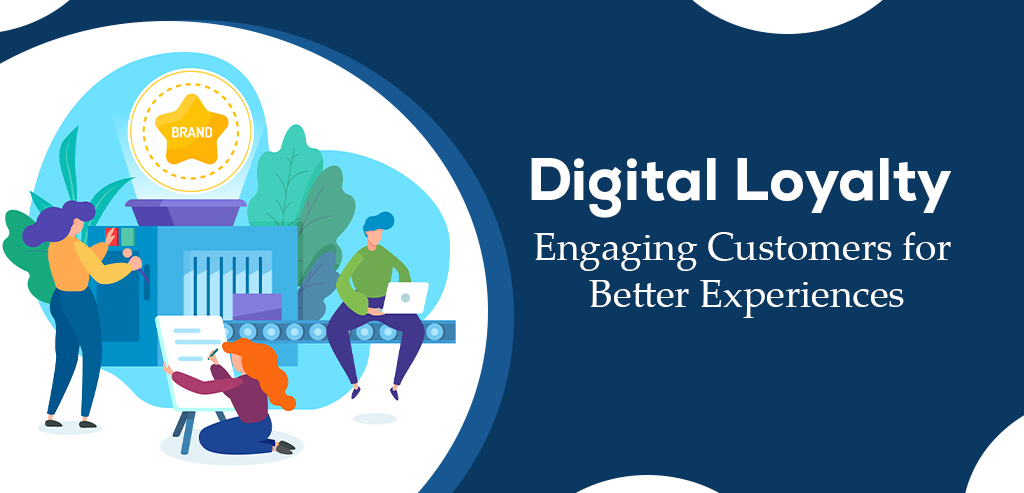In the modern era of ever-evolving technology, businesses are continually seeking innovative ways to engage with their customers. One such strategy gaining prominence is digital loyalty programs. These programs leverage digital platforms and data analytics to cultivate customer loyalty, enhance their experiences, and drive business growth.
Understanding Digital Loyalty
Digital loyalty refers to the use of digital technologies to foster customer loyalty and engagement. It entails leveraging various digital channels, such as mobile applications, websites, and social media, to offer personalized experiences, rewards, and incentives to customers. Unlike traditional loyalty programs, digital loyalty programs gather valuable customer data and employ advanced analytics to understand customer preferences, behaviors, and purchase patterns. This data-driven approach enables businesses to provide tailored offerings, personalized recommendations, and targeted marketing campaigns, thereby enhancing customer satisfaction and loyalty.
The Benefits of Digital Loyalty Programs
Advantages of Digital Loyalty Programs for Businesses:
Valuable Insights: Gain deeper understanding of customer behavior, preferences, and purchase patterns through data analytics.
Refine Marketing Strategies: Use customer insights to optimize marketing efforts and target specific customer segments effectively.
Optimize Customer Experiences: Personalize interactions and offerings based on customer data, enhancing the overall customer experience.
Direct Communication: Enable direct communication with customers through digital channels, fostering personalized interactions and building stronger relationships.
Brand Advocacy: Engage loyal customers through the loyalty program, encouraging them to become brand advocates and promote the business.
Repeat Purchases: Incentivize repeat purchases by offering rewards, discounts, or exclusive perks to loyal customers, increasing customer retention.
Customer Referrals: Encourage satisfied customers to refer their friends and family to the business, expanding the customer base and driving revenue growth.
Advantages of Digital Loyalty Programs for Customers:
Convenience: Easily access and manage the loyalty program through digital platforms, such as mobile apps or websites.
Personalized Rewards: Receive tailored rewards, promotions, and recommendations based on individual preferences and behaviors.
Exclusive Access: Gain early access to new products, services, or promotions before the general public, creating a sense of exclusivity.
Appreciation and Connection: Feel valued and appreciated by the business for their loyalty, fostering an emotional connection to the brand.
Enhanced Experience: Enjoy a heightened overall experience through personalized interactions, special privileges, and seamless customer service.
Tangible Benefits: Earn tangible rewards, such as discounts, freebies, or cashback, which provide tangible value and incentive for continued loyalty.
Simplified Engagement: Easily engage with the loyalty program, track rewards, and redeem offers, making the process simple and user-friendly.
By leveraging these advantages, businesses can cultivate strong customer relationships, drive customer loyalty, and achieve sustainable business growth in the digital age.
Key Elements of Successful Digital Loyalty Programs
To design and implement effective digital loyalty programs, businesses should consider the following key elements:
a) Personalization: Tailor the program to suit individual customer preferences and behaviors. Leverage customer data to offer personalized recommendations, rewards, and promotions.
b) Gamification: Incorporate game-like elements, such as points, badges, and challenges, to make the loyalty experience engaging and enjoyable.
c) Seamless User Experience: Ensure that the loyalty program is user-friendly, accessible across various devices, and integrates smoothly with existing digital platforms.
d) Social Integration: Enable customers to share their loyalty achievements and rewards on social media, encouraging brand advocacy and word-of-mouth marketing.
e) Omnichannel Approach: Provide a consistent loyalty experience across all customer touchpoints, including mobile apps, websites, physical stores, and social media platforms.
f) Data Analytics: Leverage customer data and analytics to gain insights into customer behavior, preferences, and trends. Use this information to refine marketing strategies and optimize the loyalty program.
Best Practices for Implementing Digital Loyalty Programs
Implementing a digital loyalty program requires careful planning and execution. Consider the following best practices:
a) Set Clear Objectives: Define specific goals and metrics to measure the success of the loyalty program. Align these objectives with the overall business strategy.
b) Communicate Program Benefits: Clearly communicate the value proposition and benefits of the loyalty program to customers. Emphasize how their participation will enhance their overall experience and reward their loyalty.
c) Promote Seamless Enrollment: Make the enrollment process simple and intuitive, minimizing barriers for customers to join the loyalty program.
d) Regularly Engage Customers: Continuously engage customers through personalized offers, rewards, and exclusive content. Send regular updates about new offerings and upcoming promotions.
e) Monitor and Optimize: Regularly monitor program performance and customer feedback. Leverage data analytics to identify areas for improvement and optimize the loyalty program accordingly.
Digital loyalty programs present a powerful opportunity for businesses to engage with customers in meaningful ways, providing personalized experiences and rewards that foster loyalty. If you want to embrace this new-age technique in your business, connect with LetsVeriFy for more details.

